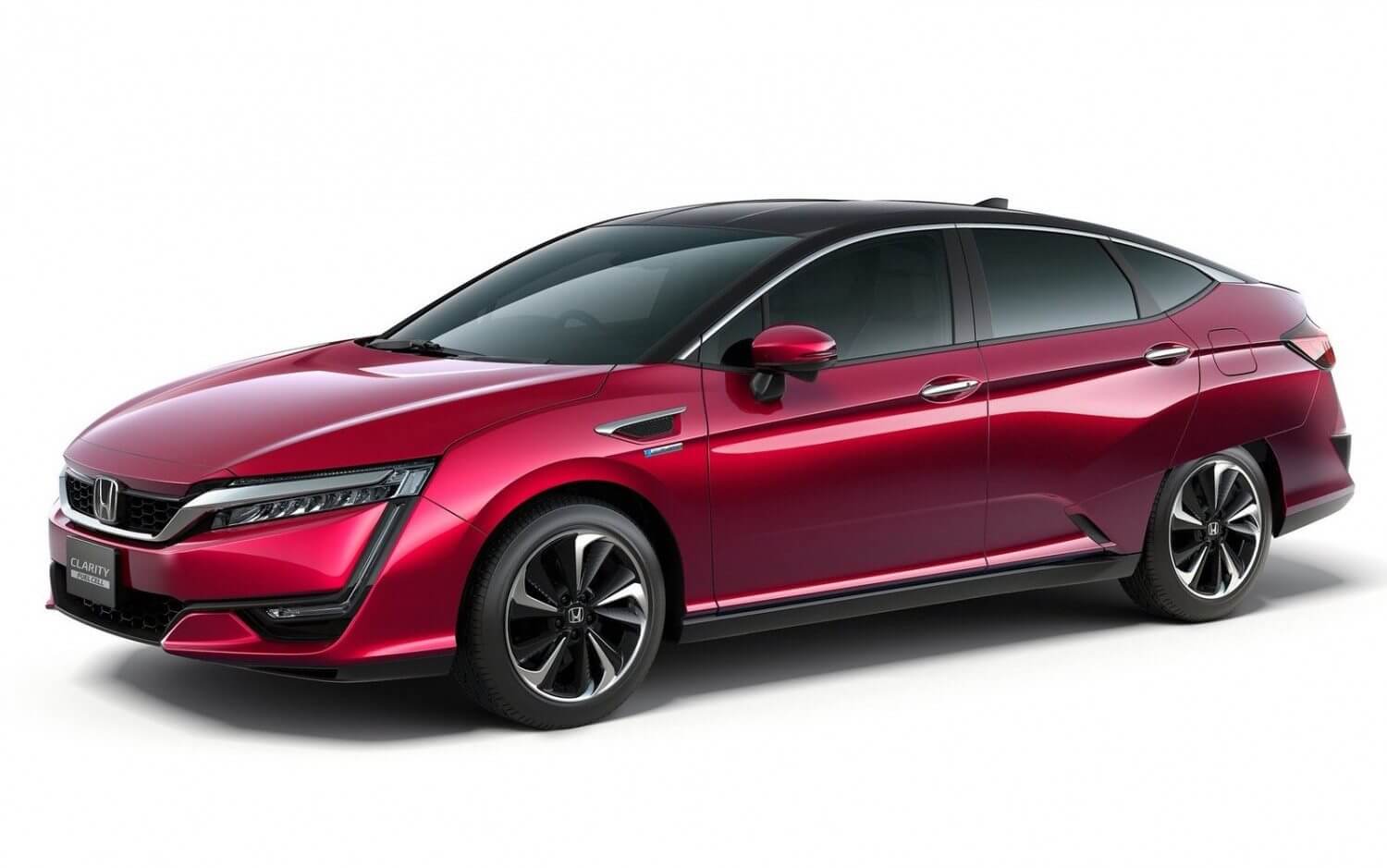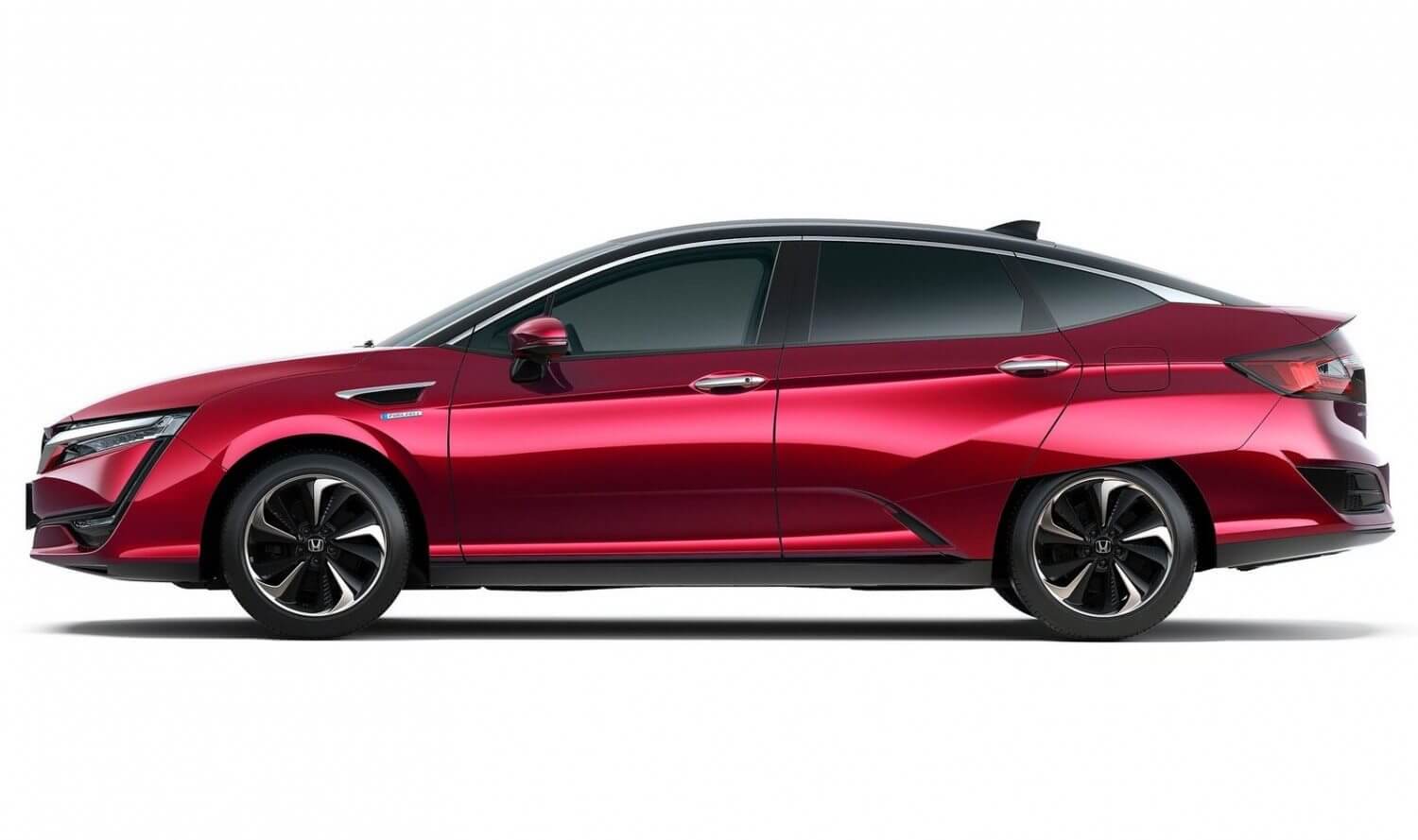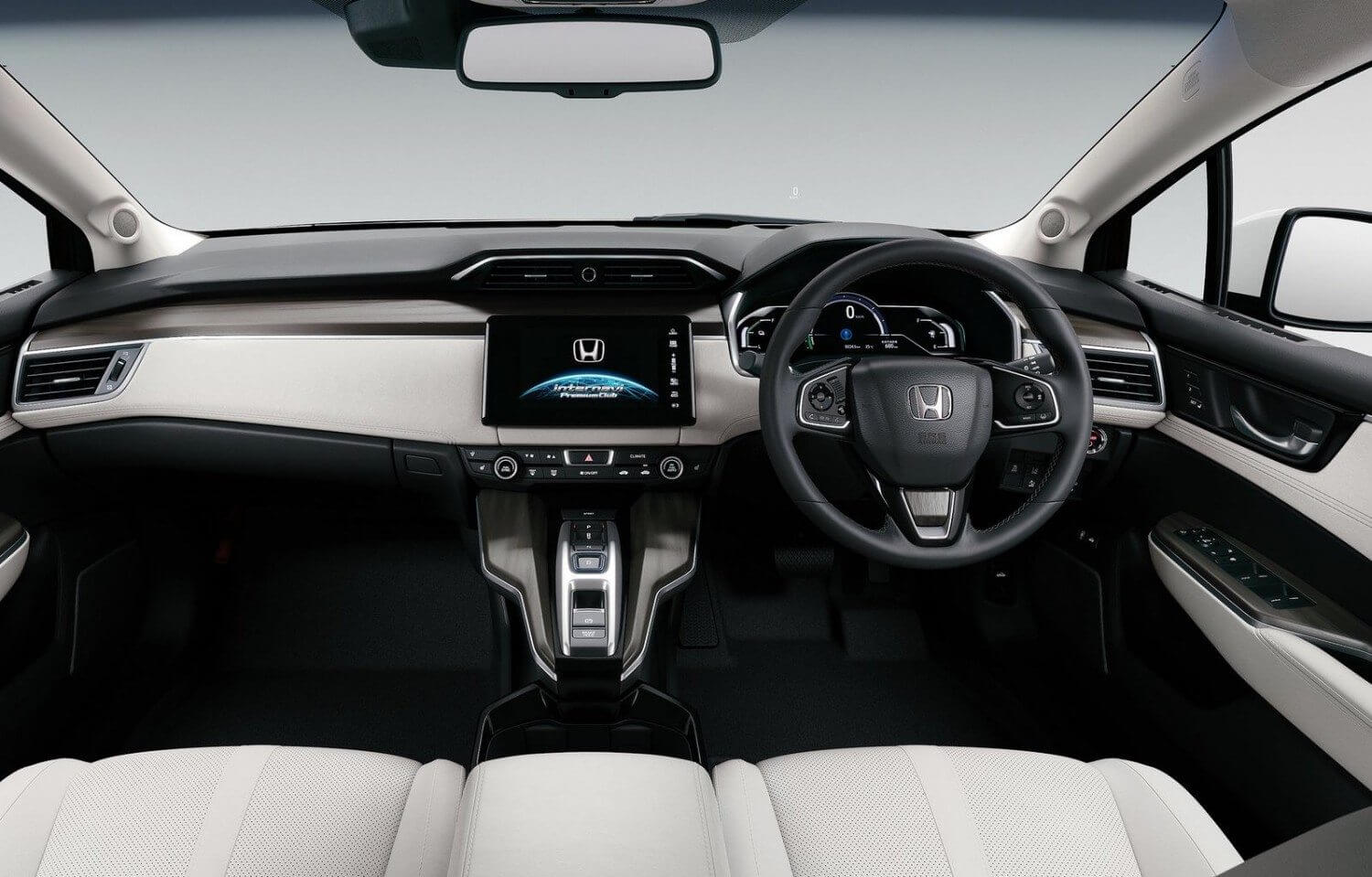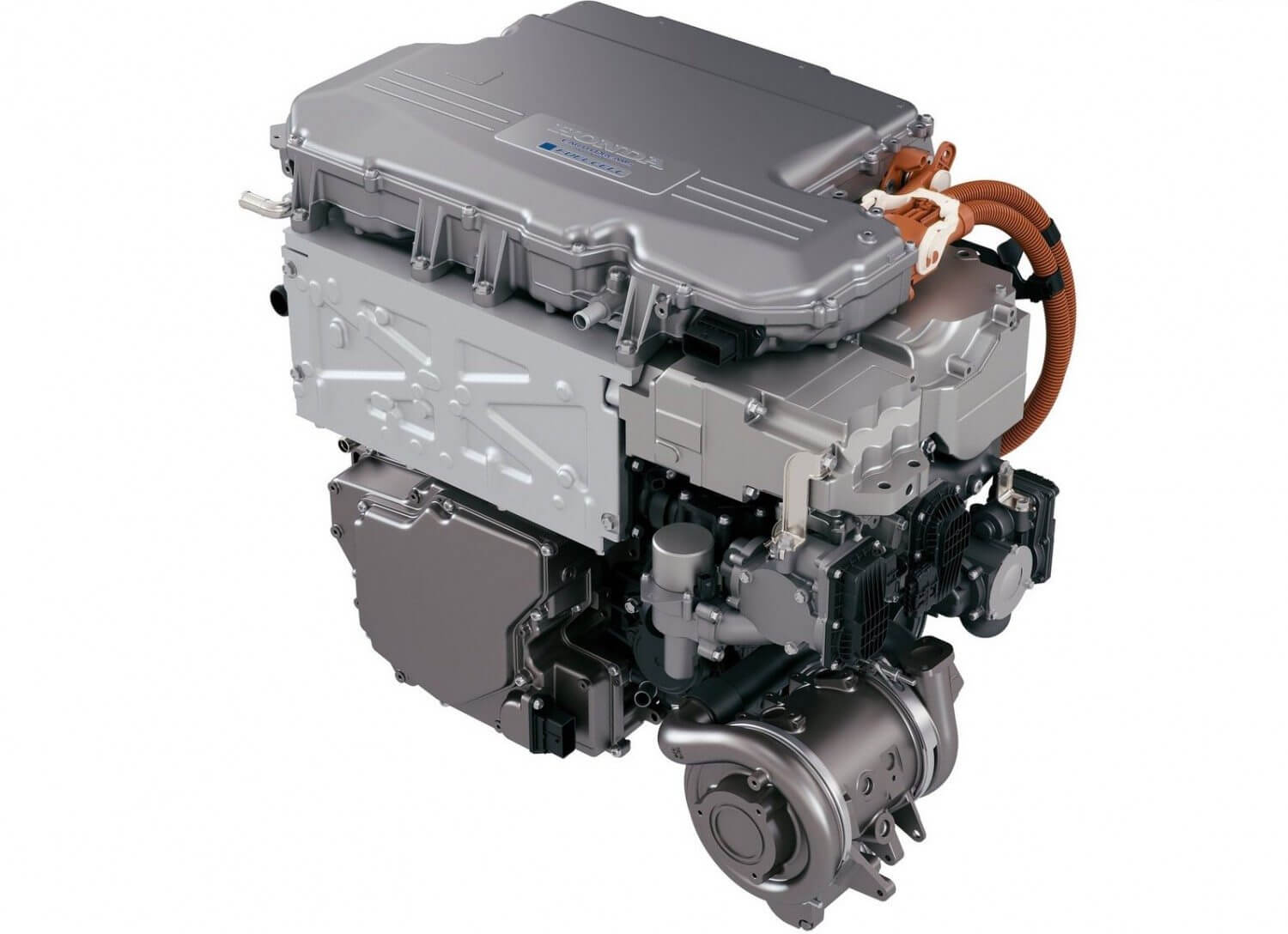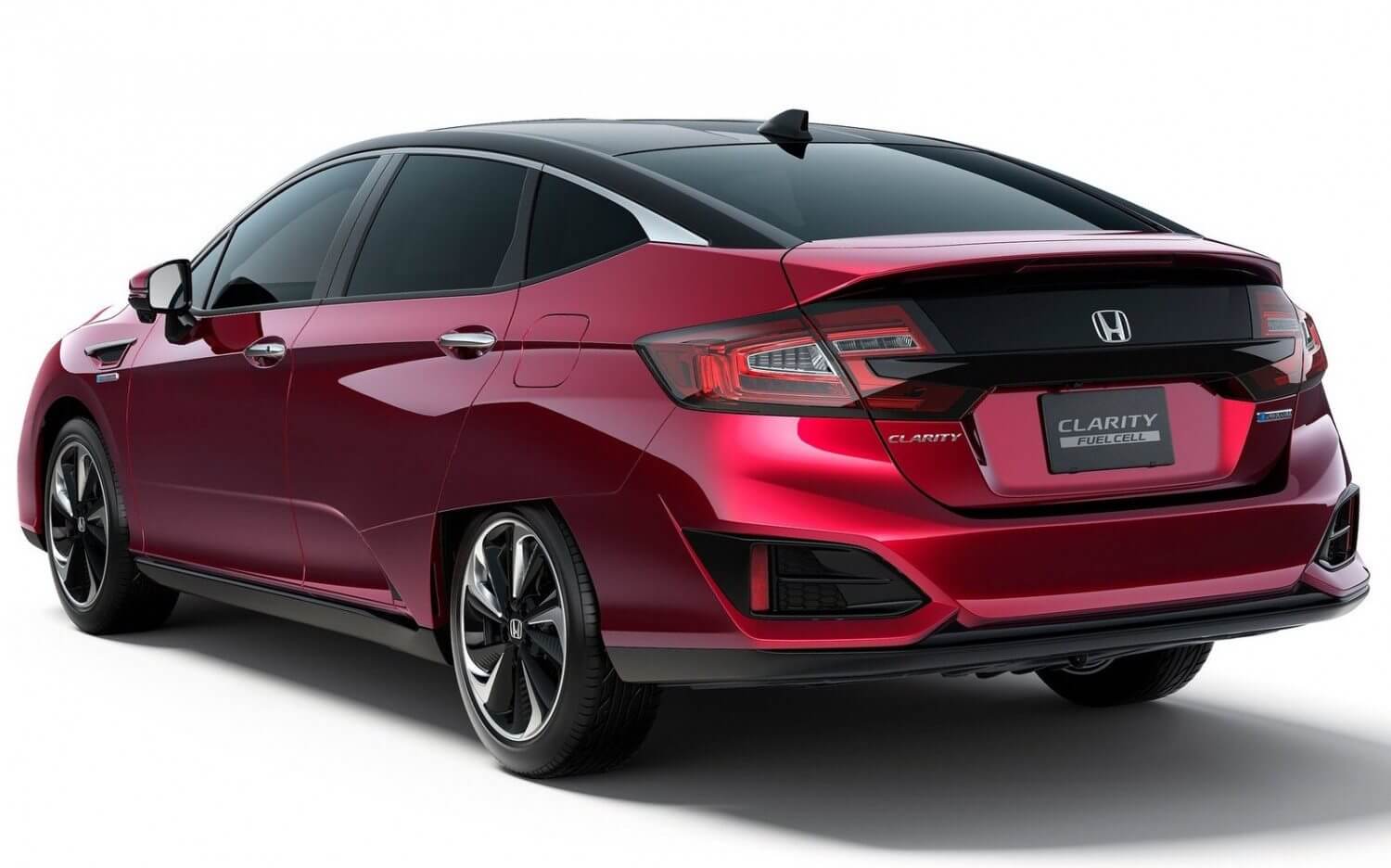Japan’s hydrogen revolution is slowly but surely starting, or so Honda and Toyota would like you to think. Honda this week has launched their new Clarity hydrogen fuel cell vehicle (FCV) in the Japanese market.
The Clarity is the second mass-produced FCV to enter the Japanese market after Toyota’s Mirai. However where the Mirai has a claimed range of 650km, the Clarity so Honda boasts, goes further with the highest range of any zero emissions car – a claimed 750 guilt free kilometres.
The fuel cell powers an electric motor which develops 130kW/177bhp of power and 300NM of torque, or about the same as an average family car.
Honda claims the Clarity, in addition with the wonderfully sci-fi sounding Power Exporter 9000, can supply up to 7 days worth of power to an average household. Quite handy in a disaster-prone country like Japan.
As for the rest of the Clarity, strip away all the FCV technology and you’re left with what is basically ‘a car’. There’s four wheels, space for five humans, and it’s about the size of a car, albeit a large one (4915mm x 1875mm x 1480mm).
It’s far from being the prettiest car in the world but at least it’s more ‘conventional’ looking than the polarising Mirai. The Clarity will be available in three colours; Pearl White, Garnet Metallic, and Crystal Black Pearl, neither of which I doubt will help it win any beauty contests.
Honda will be limiting production of the Clarity to 200 units for 2016. These first cars will be sold to government agencies and business. After Honda has received feedback from these early adopters, the Clarity will then be offered to the general public. The Clarity will be priced from, ¥7,660,000 ($100,400).
Japan, and especially Honda, are keen to push for FCVs hoping they’ll be adopted and accepted as well as hybrids were in the late 20th Century. The government offers subsidies of at least ¥2,000,000 ($26,200) on FCVs, reducing the price of a Mirai for example from ¥7,236,000 ($94,800) to ¥5,236,000 ($68,600).
Where Japan relies heavily on imported fossil fuels, FCV and EV vehicles are not only a way for Japan to reduce emissions and promote greener transportation, but it also makes Japan less dependent on external factors.
That said, hydrogen fuel itself isn’t an energy source rather a way for energy to be stored. Extracting hydrogen is an energy-consuming process and depending on how clean the process is can alter the green credibility of hydrogen FCVs. Then again, charging an EV with electricity from a coal-powered electric station isn’t all that green either.
At the moment there are around 40 hydrogen fuel cell stations in Japan, with more planned to be constructed by the 2020 Tokyo Olympics.
Honda plans to introduce the Clarity to US and European markets by the end of the year. No word on it reaching us down here. Now I’m sure there’ll be a few who disagree with FCVs in the same way few disagree with EVs. But I applaud the manufacturers who are continuing to develop FCVs. GM, Ford, Audi, Mercedes, BMW, VW, Hyundai, Mazda, Honda, and Toyota have at one point or another dabbled with FCVs.
In these early stages of zero-emission motoring there is no right or wrong to go about it. But isn’t it better to have more options than none? Maybe batteries are the way, maybe its FCV. Why not embrace both so we can find out.
What are your thoughts on the Clarity and FCVs?


